Are you looking for information about Birding in Rwanda? Well, read on! When one thinks of Rwanda, the first thing that comes to mind are the mountain gorillas, the rolling hills or the countries remarkable recovery after the horrors of the 1994 genocide. Rwanda has never stood out as a top birding nation. This is partly because avitourism has been overshadowed by gorilla tourism. There is still little publicity for birdwatching and other activities like sport fishing in Rwanda. The popularity of mountain gorillas has overshadowed most of the other tourist attractions in Rwanda. I was recently discussing with a friend about the little known Congo Nile Trail which is arguably the best biking trail in East Africa. We were all of the view that Rwanda should market these less know attractions and destinations with more intensity like gorilla trekking.
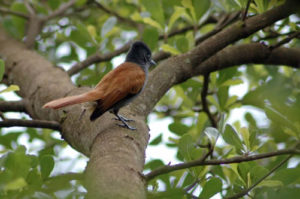 Back to the birds. Rwanda stands out as a great destination for birders because of the sheer variety of bird habitats. These range from mountains, montane forests, grasslands, plains, vast swamps, rivers, lakes and off course the rolling hills. Rwanda has good road networks with safe and clean towns. Birdwatching in Uganda may be considered more popular but the infrastructure (roads and bird trails) in Rwanda are more advanced. Because of her small size, it is easy to cover the country in a short time compared to say Kenya or Tanzania. Rwanda has few endemic bird species but has about 44 that can only be found in the Albertine Rift.
Back to the birds. Rwanda stands out as a great destination for birders because of the sheer variety of bird habitats. These range from mountains, montane forests, grasslands, plains, vast swamps, rivers, lakes and off course the rolling hills. Rwanda has good road networks with safe and clean towns. Birdwatching in Uganda may be considered more popular but the infrastructure (roads and bird trails) in Rwanda are more advanced. Because of her small size, it is easy to cover the country in a short time compared to say Kenya or Tanzania. Rwanda has few endemic bird species but has about 44 that can only be found in the Albertine Rift.
What is the best time for birding in Rwanda? Birdwatching in Rwanda can be done throughout the year but some month’s present favorable conditions for birders. It is important to note that Rwanda has two major rain and dry seasons. The period between December and January is considered perfect for birding in Rwanda. These months fall in the dry season and are special because thousands of migratory birds come into the country to escape the harsh winter conditions in Europe and the Arctic’s.
Important Birding Areas in Rwanda
Rwanda has seven major important birding areas that are located in 4 of her national parks including Nyungwe, Akagera and the Volcanoes National Park. Let’s discuss these birding areas in more detail: –
Kigali City: The countries in East Africa are blessed with incredible opportunities for birding. In the case of Rwanda or even Uganda, birdwatching can start as soon as you come out of the airport or even in the large cities. Urban Birding in Kigali is suitable for those who have limited time to venture into the countryside or visit the major national parks. You will be surprised by the birding opportunities while visiting Kigali. Birding in Kigali can start from the hotel gardens but perhaps visiting Lak Nyarutarama that borders the main golf course in Kigali would be a smarter choice. This lake has beautiful tracks and walkways that are excellent for spotting black headed herons, the grey capped warbler, white faced whistling duck and winged geese. The government of Rwanda has recently developed a large park as one leaves the city center which is becoming very popular among birders. You can also visit the Nyabarongo wetland to spot little egrets, spur winged geese, squacco turaco and yellow billed stork. Mount Kigali is also an excellent spot for birding in Rwanda. Here you can see red chested cuckoos, African paradise and southern black flycatchers among many others.
Nyungwe National Park: Nyungwe National park is the largest and oldest montane forest in Africa. There are over 300 species of birds found on the forest. The Bigugu Mountain in the forest is one of the best spots for observing the birds as they feed on the tree canopies. One can also move out of the forest and go to the Gisakura tea estate which is a favorite of the birds. The Red-collared Babbler is arguably t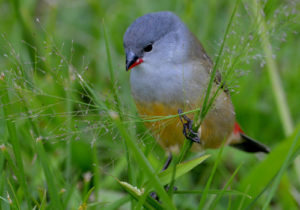 he most popular and attractive species in Nyungwe National Park. Nyungwe forest also hosts the Albertine owlet, Blue-headed sunbird, Grauer’s Swamp Warbler, Grauer’s Warbler, Handsome Francolin, Handsome spur fowls, Neumann’s Warbler, Purple Breasted Sunbirds, Regal sunbird, Rwenzori Batis, Rwenzori Nightjar, Rwenzori Turaco and the Red collared babblers among others. The best way to explore this forest is by walking or biking through part of the Congo Nile trail which cuts through the forest or using one of the well-developed forest trails that lead to the different sections of the forest. Another way of exploring the forest and spotting the birds is by going for a canopy walk. The canopy walkway in Nyungwe forest is 160 meters long and is built on top of the trees giving you an aerial view of the vast forest and its creatures. If you have enough time you can also visit the Kamiranzovu swamp
he most popular and attractive species in Nyungwe National Park. Nyungwe forest also hosts the Albertine owlet, Blue-headed sunbird, Grauer’s Swamp Warbler, Grauer’s Warbler, Handsome Francolin, Handsome spur fowls, Neumann’s Warbler, Purple Breasted Sunbirds, Regal sunbird, Rwenzori Batis, Rwenzori Nightjar, Rwenzori Turaco and the Red collared babblers among others. The best way to explore this forest is by walking or biking through part of the Congo Nile trail which cuts through the forest or using one of the well-developed forest trails that lead to the different sections of the forest. Another way of exploring the forest and spotting the birds is by going for a canopy walk. The canopy walkway in Nyungwe forest is 160 meters long and is built on top of the trees giving you an aerial view of the vast forest and its creatures. If you have enough time you can also visit the Kamiranzovu swamp
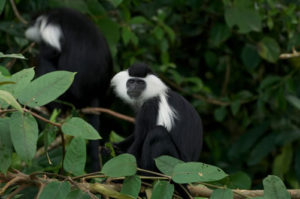 While birding in Nyungwe forest, you need to hire a birding Guide to move with you and help identify the birds and forest trails. A professional birding guide will help you identity species like the Archer’s Robin-Chat, Barred Long-tailed Cuckoo, Black-headed Waxbill, Doherty’s Bush-shrike, Eastern Mountain Greenbul, Great Blue Turaco, Grey Cuckooshrike, Montane Oriole, Mountain Illadopsis, Mountain Sooty Boubou, Pink-footed Puff back, Red-chested Owlet, Regal Sunbird, Ruwenzori Batis, Ruwenzori Blue-headed Sunbird, Sharpe’s Starling, Slender-billed Starling, Striped-breasted Tit, Stuhlmann’s Double-collared Sunbird, Stuhlmann’s Starling, Thick-billed Seedeater, White-eyed Slaty Flycatcher, White-starred Robin and the Yellow-eyed Black Flycatcher.
While birding in Nyungwe forest, you need to hire a birding Guide to move with you and help identify the birds and forest trails. A professional birding guide will help you identity species like the Archer’s Robin-Chat, Barred Long-tailed Cuckoo, Black-headed Waxbill, Doherty’s Bush-shrike, Eastern Mountain Greenbul, Great Blue Turaco, Grey Cuckooshrike, Montane Oriole, Mountain Illadopsis, Mountain Sooty Boubou, Pink-footed Puff back, Red-chested Owlet, Regal Sunbird, Ruwenzori Batis, Ruwenzori Blue-headed Sunbird, Sharpe’s Starling, Slender-billed Starling, Striped-breasted Tit, Stuhlmann’s Double-collared Sunbird, Stuhlmann’s Starling, Thick-billed Seedeater, White-eyed Slaty Flycatcher, White-starred Robin and the Yellow-eyed Black Flycatcher.
Nyungwe forest is very dense and viewing the birds can be difficult because most of them prefer to stay on the trees. Your experienced birder should be able to take you to the best spots of the forest where you can have clear views of the birds. Birdwatching in the forest will also expose you to other forest creatures and particularly the primates like Angola Colobus, Golden monkeys and the chimpanzees of Rwanda.
Akagera National Park: Akagera National Park is a collection of lakes, wetlands, rolling hills and savannah which combine to attract 310 species of birds. The park lies in the north eastern side of the country close to the border with Tanzania. The best birding sports are around Lake Ihema, its islands, marshes and wetlands. A boat ride on Lake Ihema is an effect way to spot the birds in the Park but 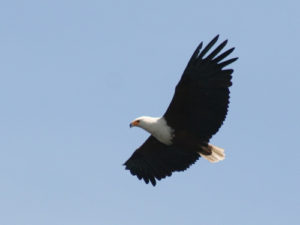 birding trips on the savannah are organized early in the morning and evening. The morning sessions are arguably the most fun as there is a lot of bird activity. The most common specie in the park is the Red-faced barbet but Akagera is also home to the endangered papyrus Ganolex. It is also important to note that Akagera national park is arguably the best place to spot the elusive Ring-necked Francolin in Africa. During your safari in Akagera National Park, expect to spot other interesting species like the Carruthers’s Cisticola, Grey-crowned Cranes, Northern Brown-throated Weaver, Papyrus Gonolek, White-collared Oliveback and White-Winged Swamp Warbler. The African Starling is arguably the most beautiful bird in Akagera. They have amazing feathers which change color and glitter in the mid-day sun. Spotting this bird is one of the highlights of a birding safari in Akagera.
birding trips on the savannah are organized early in the morning and evening. The morning sessions are arguably the most fun as there is a lot of bird activity. The most common specie in the park is the Red-faced barbet but Akagera is also home to the endangered papyrus Ganolex. It is also important to note that Akagera national park is arguably the best place to spot the elusive Ring-necked Francolin in Africa. During your safari in Akagera National Park, expect to spot other interesting species like the Carruthers’s Cisticola, Grey-crowned Cranes, Northern Brown-throated Weaver, Papyrus Gonolek, White-collared Oliveback and White-Winged Swamp Warbler. The African Starling is arguably the most beautiful bird in Akagera. They have amazing feathers which change color and glitter in the mid-day sun. Spotting this bird is one of the highlights of a birding safari in Akagera.
We shouldn’t forget to mention that the elusive Shoebill stork is resident here but spotting them requires time and patience. The best time for birding in Akagera is during the dry season (May to September). The southern sector of the park has more variety of butterflies and birds than the northern sector. While in Akagera national park, expect to encounter the famous mammals like elephants, giraffes, hippos, lions and countless antelopes. Accommodation can be in tented camps or standard cottages depending on your preference and budget.
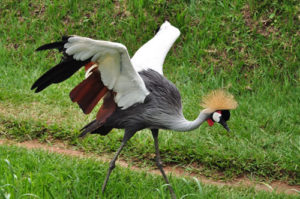 Volcanoes National Park: This park is more famous for gorilla trekking, golden monkeys and hiking one of the volcanoes like Karisimbi. However, this does not change the fact that it is one of the best places for birding in Rwanda. About 200 species can be found in the park. 27 of them can only be seen here while in Rwanda while 16 are endemic to the volcanoes in the Virunga ranges of mountains. Among the species to look out for are the Archer’s ground robin, Cinnamon bracken warbler, Grauer’s rush warbler, Rwenzori batis, White-tailed blue-flycatcher, Black and white manikin. The Volcanoes national park is bordered by Mgahinga National Park in Uganda and the Virunga National Park in Congo ensuring that some of the species found in these two countries can be seen in Rwanda.
Volcanoes National Park: This park is more famous for gorilla trekking, golden monkeys and hiking one of the volcanoes like Karisimbi. However, this does not change the fact that it is one of the best places for birding in Rwanda. About 200 species can be found in the park. 27 of them can only be seen here while in Rwanda while 16 are endemic to the volcanoes in the Virunga ranges of mountains. Among the species to look out for are the Archer’s ground robin, Cinnamon bracken warbler, Grauer’s rush warbler, Rwenzori batis, White-tailed blue-flycatcher, Black and white manikin. The Volcanoes national park is bordered by Mgahinga National Park in Uganda and the Virunga National Park in Congo ensuring that some of the species found in these two countries can be seen in Rwanda.
Gishwati-Mukura National Park: This is Rwanda’s newest national park and is found in the Northwestern part of Rwanda. Even before it became a national park, Gishwati was known as Rwanda’s 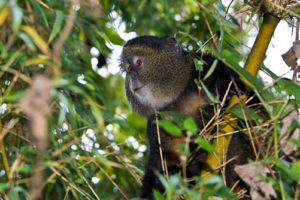 prime spot for birding with 395 species on offer. Some of them include the Martial Eagle, Purple-breasted Sunbirds, Red-throated Alethe, Regal Sunbirds, Ruwenzori Batis, Ruwenzori Turaco, Strange Weaver, Stripe-breasted Tit and the Grey Crowned Crane. Most of the species are forest dwellers or those endemic to the Albertine Rift. There are also those that migrate all the way from Congo for most parts of the year. While looking out for the birds, expect to encounter baboons, chimpanzees, blue and golden monkeys. For the best birding experience in Gishwati-Mukura National Park, you should go during the dry season. The wet/rain season presents a lot of difficulties including mud-filled trails which can be very slippery.
prime spot for birding with 395 species on offer. Some of them include the Martial Eagle, Purple-breasted Sunbirds, Red-throated Alethe, Regal Sunbirds, Ruwenzori Batis, Ruwenzori Turaco, Strange Weaver, Stripe-breasted Tit and the Grey Crowned Crane. Most of the species are forest dwellers or those endemic to the Albertine Rift. There are also those that migrate all the way from Congo for most parts of the year. While looking out for the birds, expect to encounter baboons, chimpanzees, blue and golden monkeys. For the best birding experience in Gishwati-Mukura National Park, you should go during the dry season. The wet/rain season presents a lot of difficulties including mud-filled trails which can be very slippery.
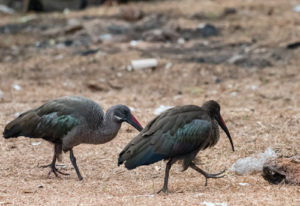 Lake Kivu: Lake Kivu is more known for its beautiful beaches, islands and as one of the best places for sport fishing sport in Rwanda. It is easy to forget that the Lake is a top birding destination in its own right. The natural beauty of the lake and its islands attract White-breasted Cormorants and Pied Kingfishers. Thousands of migratory birds can be sighted feeding round the lake during certain months of the year together with the residents. For a complete birding experience in Lake Kivu, you must visit Nkora Island. Nkora Island is a small fishing village with an amazing collection of water birds and even cave bats. You will also get to mingle with the local fishermen and learn about how they make ends meet.
Lake Kivu: Lake Kivu is more known for its beautiful beaches, islands and as one of the best places for sport fishing sport in Rwanda. It is easy to forget that the Lake is a top birding destination in its own right. The natural beauty of the lake and its islands attract White-breasted Cormorants and Pied Kingfishers. Thousands of migratory birds can be sighted feeding round the lake during certain months of the year together with the residents. For a complete birding experience in Lake Kivu, you must visit Nkora Island. Nkora Island is a small fishing village with an amazing collection of water birds and even cave bats. You will also get to mingle with the local fishermen and learn about how they make ends meet.
Wetlands, Marshes and Nyabarongo River: 10 percent of Rwanda is made up wetlands, swamps and marshes. The major wetlands and marches include Rugezi, Akanyaru and Rugezi. These wetlands provide naturel feeding and nesting grounds for the birds because they keep away most predators while also proving insects and frogs for food. The Rugezi Marsh is a top birding destination and the only RAMSAR site in Rwanda. The marsh covers an area of about 6,734 hectares, and is host to about 43 bird species including the Grauners Swap Warbler, Papyrus Genolek, Papyrus Yellow Walber and Thick Billed Seedeater. As you go southwards from the marsh, you will find open waters in what is Lake Nyagafunzo. This lake is a birders paradise in its own right. It offers opportunities to spot the Lesser Jacana and White-backed Duck.
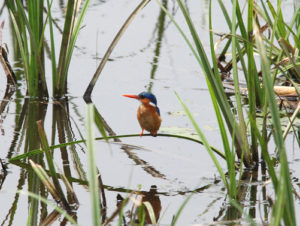 The wetlands in Nyabarongo river are not well known but offer wonderful birding opportunities. The Nyabarongo river is a tributary of the great river Nile and empties its waters on river Akagera which then flows to Lake Victoria. The Wetlands are home to Garuer’s swamp warblers and papyrus gonoleks. You can also encounter swamp elephants and the elusive Sitatunga while on a birding mission here. Other wetlands and marshes that host birding sanctuaries are those in Bugesera District and Akanyaru. Akanyaru wetlands are found along the border with Burundi. They stand out for their floating vegetation and papyrus swamps. Here you can spot the about 54 species of birds including the lesser kestrel, Madagascar squacco Heron, pallid harrier and the endangered papyrus Gonolex.
The wetlands in Nyabarongo river are not well known but offer wonderful birding opportunities. The Nyabarongo river is a tributary of the great river Nile and empties its waters on river Akagera which then flows to Lake Victoria. The Wetlands are home to Garuer’s swamp warblers and papyrus gonoleks. You can also encounter swamp elephants and the elusive Sitatunga while on a birding mission here. Other wetlands and marshes that host birding sanctuaries are those in Bugesera District and Akanyaru. Akanyaru wetlands are found along the border with Burundi. They stand out for their floating vegetation and papyrus swamps. Here you can spot the about 54 species of birds including the lesser kestrel, Madagascar squacco Heron, pallid harrier and the endangered papyrus Gonolex.
Packing list for birding in Rwanda
To have the best birding experience in Rwanda, you need to travel well prepared with high quality binoculars, pointers, sturdy hiking shoes, a birder’s book (this can be got from tourism shops or at the park offices), drinking water and snacks. You should always be in the company of an experienced local guide who should take you to the best birding spots and help identify the species. Let’s discuss the packing list in more detail:
Binoculars: Binoculars are a must for birders. It is one of the most important things to think of acquiring when planning for a birding tour in Rwanda. The birds in Africa are relatively shy and most will fly off if you come too close or if they notice any attention from intruders. One reason for this excessive fear of humans is that they are or were often hunted for meat by human populations in many parts of Africa. The best way to spot them is to come with high quality binoculars that can be adjusted to give clearer views.
A Camera: What is the use of a binoculars if you can’t take good photos of the birds to show off to your friends or the wider birding community. A good camera is essential for a great birding experience. We recommend that you buy the best camera you can afford so that you take amazing photos of Rwanda and her beautiful birds. The photos will also help you compare notes with those in the books and see how successful your expedition turned out to be.
A Portable voice recorder: Birds make different call signs/sounds which can be very intriguing. The best way to record these sounds is with a good portable voice recorder. This will also help you identify the different birds when back in your room comparing notes.
Birding books on Rwanda: Bird identification books are important to help you identify the species you spotted. The books can be acquired/bought from the national park offices and other major birding spots. The book should have a complete collection of the birds (including their pictures) in the area you are planning to visit because it will help you know the species encountered.
Drinking water and food. Sometimes birding expeditions go on for long hours leaving you thirsty and exhausted. What better way to relieve yourself than by taking your snacks and drinking water? Most of the birding spots are in remote areas with no restaurants or shops. It is wise to go out prepared so that you don’t get thirsty and hungry while out in the jungle.
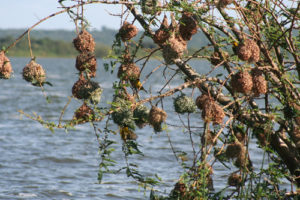 Insect repellant: Birds thrive in areas where insects are in plenty. After all, insects are their main food apart from fruits and grain. Some of these insects have painful stings (wasps, bees, mosquitoes and Tses Tse flies). To keep them off come with a good insect repellent.
Insect repellant: Birds thrive in areas where insects are in plenty. After all, insects are their main food apart from fruits and grain. Some of these insects have painful stings (wasps, bees, mosquitoes and Tses Tse flies). To keep them off come with a good insect repellent.
Hides and other clothing: Hides are special camouflage clothes used by birders to appear like they are part of the surrounding without attracting the attention of the birds. These special clothes can help one approach the birds without being noticed. Having a good set of hides is especially important if you are planning to spot some of the elusive species that take off as soon as sense human presence. Apart from the hides, you also need comfortable clothes that are suitable for the jungle or wetlands. A good trouser, long sleeved and light shirt will help protect you from insects and the African sun.
Code of conduct while on a birding safari in Rwanda
While in the national parks or birding sanctuaries, you need to follow certain rules and codes of conduct. You need to respect the birds and the environment in which they live in.
- Do not act in a way that will endanger the well-being of the birds or disturb them in any way. A good birder should never chase birds or try to flush them out from where they are hiding. Let them come out at their own free will.
- Be careful while recording the birds and avoid the use of flash cameras if possible especially in areas with many birds and during the breeding season. Keep a good distance away from known nesting colonies so as not to alert the birds or expose the chicks to danger. Unless you are a researcher, do not touch eggs. Many species abandon their eggs if touched by humans.
- Respect the environment in which you find yourself in. Don not litter bird sanctuaries. Avoid trampling and leave bird habitats as you found them. Do not trespass on private property while birding before asking for permission. You don’t want to spoil the image of the wider birding community.
- Try to find out any specific rules or regulations pertaining to a specific birding place. If possible, move in a smaller manageable group to avoid damaging the environment or alerting the birds.
